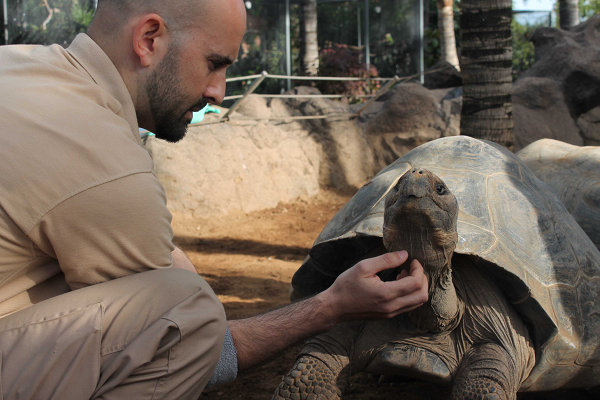The two female Galapagos turtles (Geochelone nigra) housed in Loro Parque have laid eggs for the first time. This fact indicates that both females have reached sexual maturity and are ready for the reproduction. This is an important achievement from the environmental point of view, because they are a long living species, vulnerable and with a delayed reproduction, in zoos as well as in the wild, so the first egg laying, although not fertile, indicates a soon reproduction.
The Galapagos turtles are the largest on the planet and they can achieve a weight up to 250 kilos. Formerly they were distributed in every continent, except Australia and Antarctica, but now they are extincted on the mainland, and live only on the Galapagos Islands of Ecuador, where there are different populations in various localities. The two females of Loro Parque are over 20 years old and live together with the approximately 50 years old male Tom, with whom they share an open exhibition, specially created for them, where each animal has its own cave.
Usually, turtles spawn their eggs on the ground and plug up the holes for incubation, so the keepers and veterinarian team realizes a very special monitoring of the animals with frequent ultrasounds, in order to observe this reproductive stage.
The Galapagos turtles is a threatened specie and listed as rare as a result of the hunting, the destruction of their hábitat and the introduction of animals that compete with adult animals for food. The “Lonesome George”, the iconic giant turtle from the island Pinta recently died without offspring, and after unsuccesful attempts to reproduce them, it was the last animal of its subspecie.














